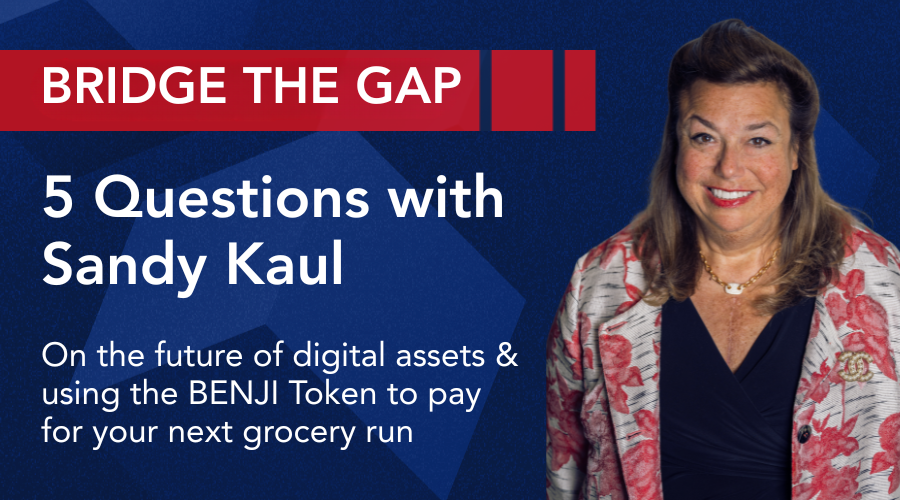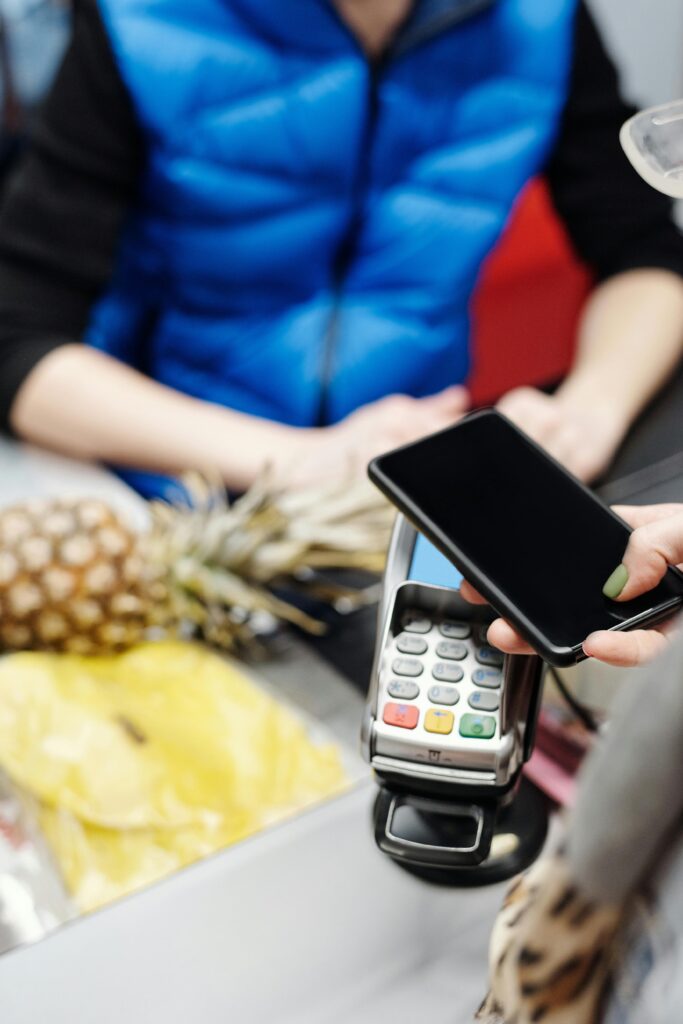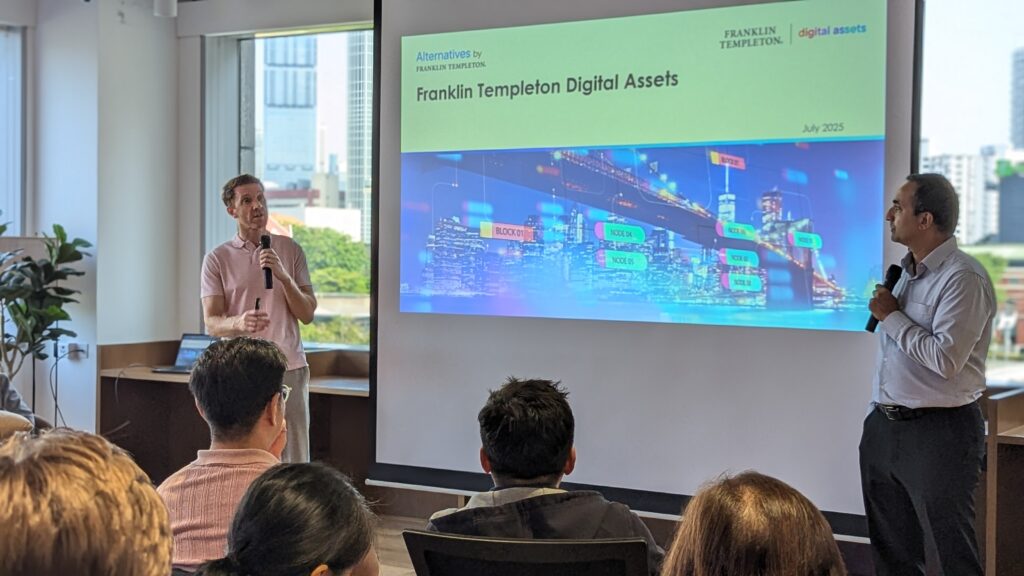5 Questions with Sandy Kaul, Head of Innovation, Franklin Templeton

SBIDM speaks with Sandy Kaul, Head of Innovation at Franklin Templeton as she answers 5 burning questions on the future of digital assets and whether the BENJI Token can be used to pay for your next grocery run.
1. Franklin Templeton has long been recognised as a pioneer in asset management – what was the trigger that convinced the firm to enter the world of tokenisation & blockchain?
Franklin Templeton was one of the only remaining asset managers doing our own transfer agent work. This involves the administration of fund shares. There are two records for every investment fund. The record of the securities or assets it holds which is administered by the asset manager’s middle office with key clearing and settlement partners, and the record of the shareholders who buy and sell shares in the fund each day. Transfer agents are the ones who update the shareholder record each day. Because we were doing this work on our own, we were creating thousands of ledger entries every day. We wanted to explore to see whether moving these records onto a blockchain would improve the process and cut the costs.
Since we began this exploration in 2018, there were no technologies available to help us that could meet regulatory requirements. We thus set out to build our own platform. We decided to tokenise a U.S. government money market fund because these funds feature a daily distribution of yield, thus ensuring that we had a good test case for understanding the potential benefits of tokenisation and blockchain.
“Since we began this exploration in 2018, there were no technologies available to help us that could meet regulatory requirements. We thus set out to build our own platform.”
Sandy Kaul, Head of Innovation, Franklin Templeton
2. From your vantage point, how do you see blockchain infrastructure reshaping the traditional investment value chain – from fund creation to distribution and custody?
Blockchain infrastructure provides 4 key benefits that we believe will reshape the global financial ecosystem.
i) Blockchains provide unparalleled transparency. Every counterparty to a transaction sees the same information at the same time. This will eliminate the need to reconcile one organisation’s record of a trade with another organisation’s record, thus making it easier and faster to register transactions.
ii) Assets and payments move simultaneously on blockchain. Today, there are complex and multi-step processes that run in parallel to ensure that an asset is sent to a buyer and a payment is sent to a seller. The need for those complex and dual processes disappears when assets are held on blockchain.
iii) Contracts that govern the treatment of the asset and the rights of the asset owner can be embedded into a token that moves with the asset. Today, contracts for commodities, or derivatives, or structured products all exist in either paper or PDF or electronic form and are housed separately from the asset. Each day, these contracts must be reconciled against the asset holdings and manually or systematically administered. Blockchains allow these contract terms to be automatically checked without human intervention and the clauses to be triggered whenever eligible.
iv) Investments wrapped into a token offer more utility. Because these tokenised wrappers are written on standard templates, they are recognisable by other applications and can interoperate. This makes it easy to transfer assets, pledge assets, lend assets, borrow assets, and stake assets. Today, these options are offered to many institutional investors, but the operational complexity to offer the same opportunities to retail investors is prohibitive. Blockchain and tokenisation will thus democratise access to these enhancements and allow all investors to get more benefit from the assets they hold.
3. Franklin Templeton’s tokenised US Government Money Fund has been live for some time now – what have been the most unexpected learnings or advantages from launching that product on public blockchain?
Our most important learning came early on in our experience. To record transactions for our tokenised money market fund on a blockchain, we had to hold the native tokens of that blockchain to pay for the block space. We thus had to put those tokens into our treasury. We then had to hedge against any potential devaluation in those tokens. To do so, we began to run our own nodes and verify transactions on the chains where we operate.
We essentially became a part of the networks we were utilising and a part of the communities they are building. We saw first-hand the value being created. This prompted us to build our own token-focused research and investment team and to begin constructing crypto portfolios. We believe that these investments represent a tremendous growth opportunity for our clients and that over time these holdings will be a part of every investor’s portfolio.

4. Do you foresee a future where shoppers can pay for groceries using the BENJI token?
One of the exciting aspects of the emerging ecosystem is that we are enabling a new digital barter society. The blockchain allows us to prove that an asset exists, show its value, affirm the amount available, and list its value. The tokenised wrapper allows for ownership of the asset to be fractionalised down to incremental amounts and for those fractional assets to be easily transferred wallet-to-wallet. This is creating the foundation for many things to be used as payment options.
Our BENJI token is an easy one because the money market fund looks to maintain a net asset value of $1.00 per share so using that to effect payments will be a straightforward exercise and merchants may even offer lower pricing for consumers that pay in a tokenised money market fund because they get the benefit of the yield on those payments.

5. Partnerships and ecosystem collaboration are vital for industry-wide adoption amongst regulated financial institutions. What types of partners or platforms does Franklin Templeton see as critical to scaling digital asset adoption globally?
The emerging financial market infrastructure is one that will be defined by networks and ecosystems.
Embedding our infrastructure into these networks and actively participating as a community member are the foundations of our digital asset strategy. We have already deployed our tokenisation and transfer agent system across 9 different blockchains and engaged with the treasuries, the developer communities, and the app providers of those networks.
We are actively running our own transaction verification nodes on 11 different networks. We have built our own trade and portfolio management system that hooks into multiple crypto exchanges and digital asset custodians. We have built a swap facility into our infrastructure that allows investors to subscribe and redeem to our investment products using stablecoins and plugged in leading stablecoin providers to facilitate this activity.
We will continue to build out this network and bring other emerging offerings in the future. We are especially excited about the possibilities of emerging digital identification technologies as a pathway to improving today’s approach to Know Your Customer and Anti-Money Laundering rules.
